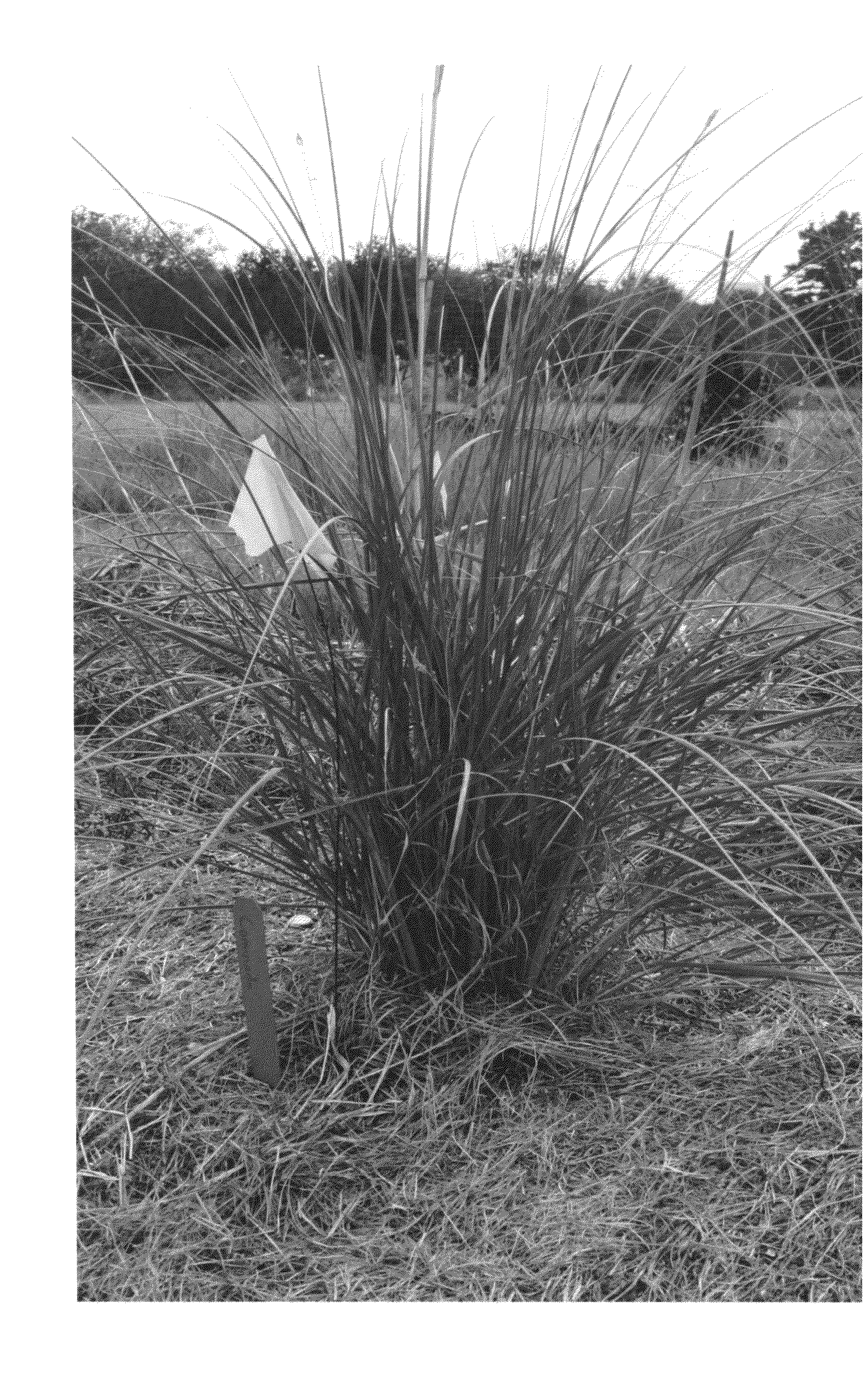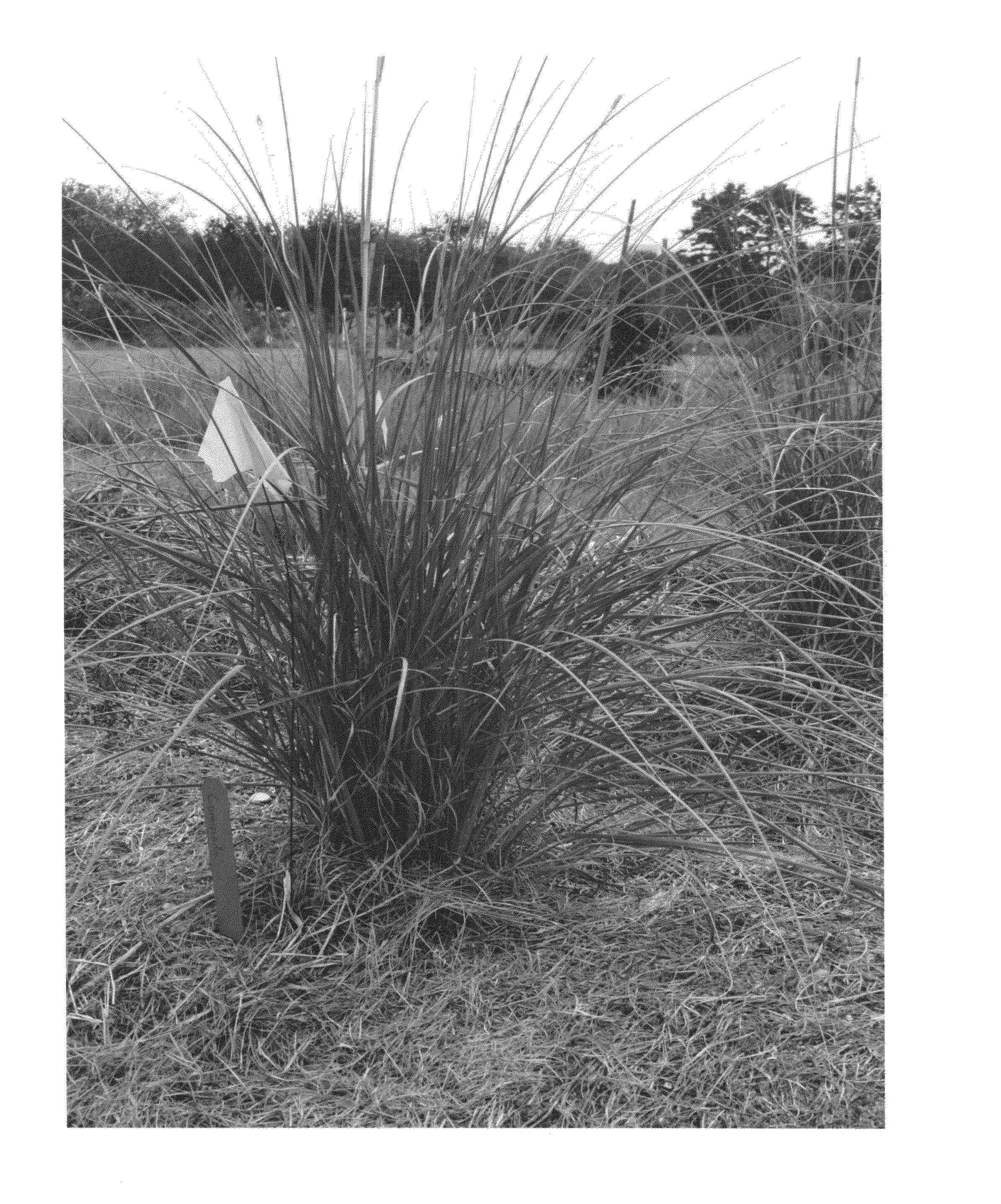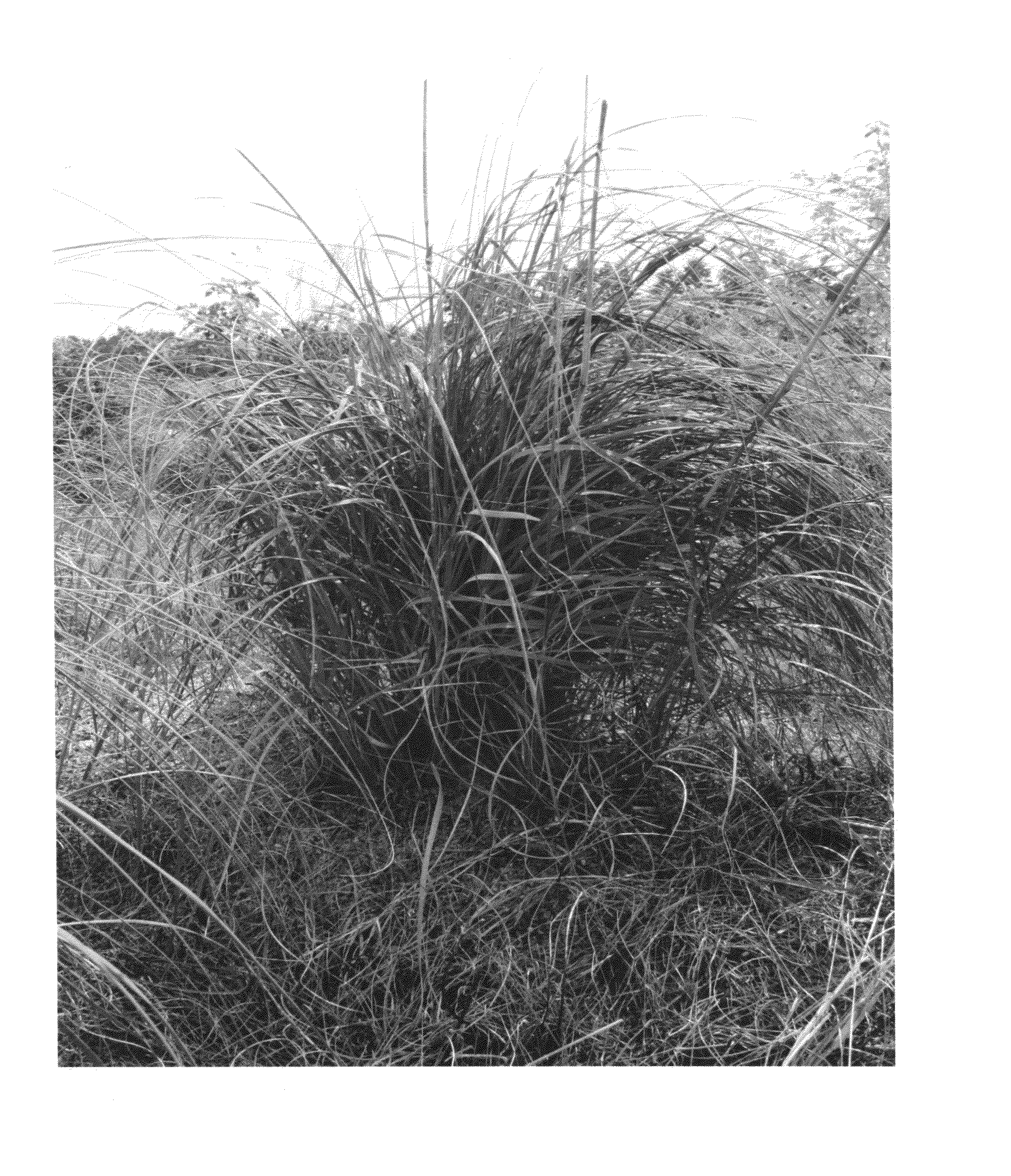Sea oats named 'LA12-203'
a technology of sea oats and oats, applied in the field of sea oats namedla12203, can solve the problems of reducing the ability of plants to adapt to environmental changes, inferior plants being used in restoration projects, and reducing genetic variation, so as to achieve the effect of wide leaf blades, large stems, and vigorous growth habits
- Summary
- Abstract
- Description
- Claims
- Application Information
AI Technical Summary
Benefits of technology
Problems solved by technology
Method used
Image
Examples
example 2
Replicated Beach Trials
[0020]In replicated beach trials at Gulfport, Miss. (described in Paragraph 0014), ‘LA12-203’ was more vigorous and had a higher stem density than ‘Caminada’ and had similar plant vigor, height and stem density as ‘LA12-201’ and ‘LA12-202’ (Table 3).
TABLE 3HeightNumber of StemsVarietyVigor†(cm)per 100 cm2‘LA12-203’5.0 a‡48.4ab4.0 a‘Caminada’3.7 b41.7b2.7 b‘LA12-201’5.1 a47.8 ab3.9 a‘LA12-202’5.2 a53.6 a3.8 a†Vigor was visually estimated on a scale of 0-10 (0 = dead; 10 = excellent).‡Means within the same column that are followed by different letters are significantly different (t test, p
example 3
Genetic Similarity Analysis
[0021]Genetic similarity of ‘LA12-203’, ‘Caminada’, ‘LA12-201’ and ‘LA12-202’ was determined with Jaccard similarity coefficients from 534 Amplified Fragment Length Polymorphisms (AFLP) markers. ‘LA12-203’ is the least similar to ‘LA12-201’ (0.9209) while ‘LA12-203’ is most similar to ‘Caminada’ (0.9392) (Table 4).
TABLE 4Variety ‘LA12-203’‘Caminada’‘LA12-201’‘LA12-202’‘LA12-203’1.0000‘Caminada’0.93921.0000‘LA12-201’0.92090.92581.0000‘LA12-202’0.93190.91560.91051.0000
PUM
 Login to View More
Login to View More Abstract
Description
Claims
Application Information
 Login to View More
Login to View More - R&D
- Intellectual Property
- Life Sciences
- Materials
- Tech Scout
- Unparalleled Data Quality
- Higher Quality Content
- 60% Fewer Hallucinations
Browse by: Latest US Patents, China's latest patents, Technical Efficacy Thesaurus, Application Domain, Technology Topic, Popular Technical Reports.
© 2025 PatSnap. All rights reserved.Legal|Privacy policy|Modern Slavery Act Transparency Statement|Sitemap|About US| Contact US: help@patsnap.com



